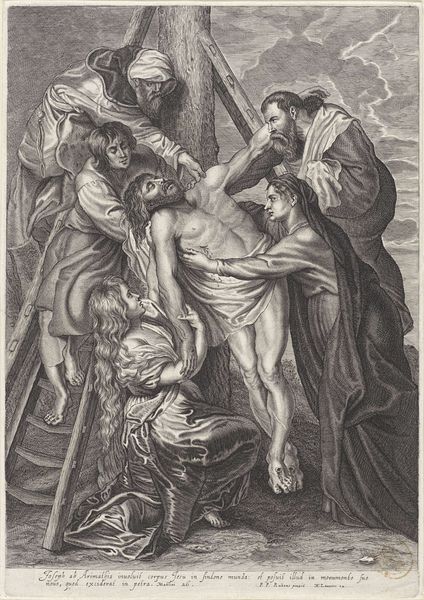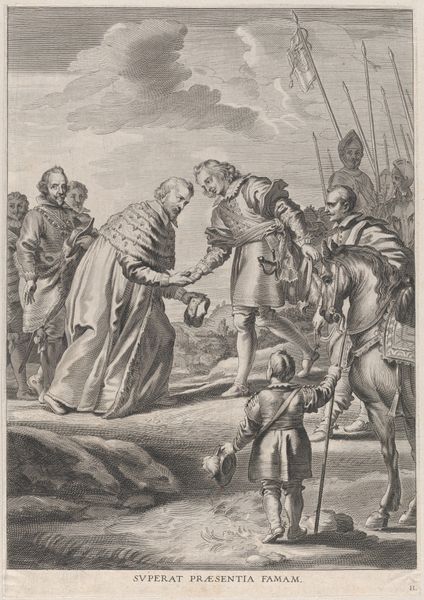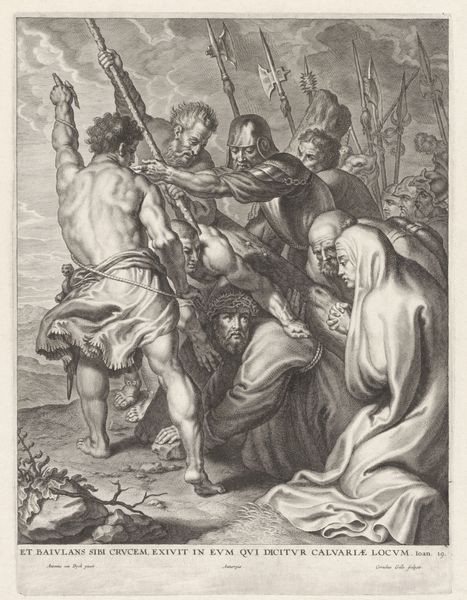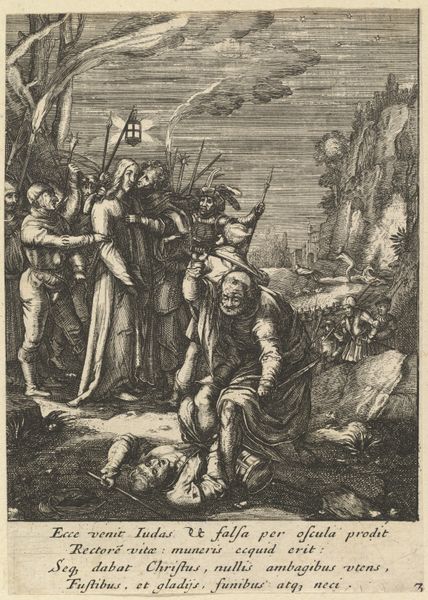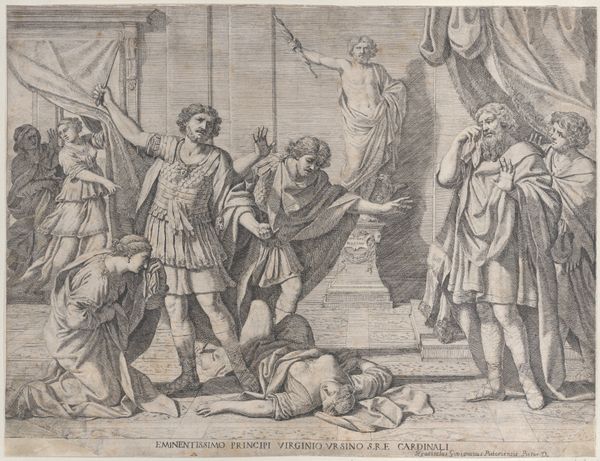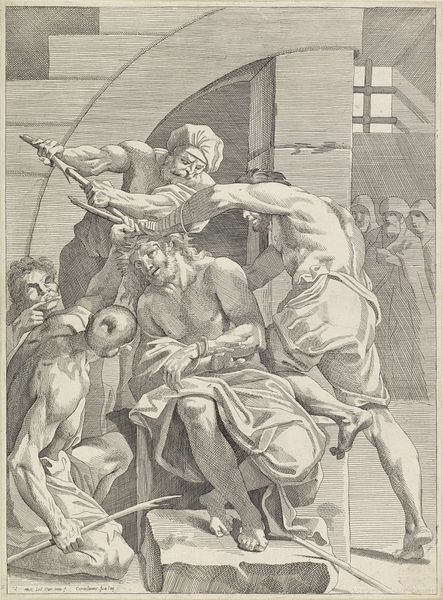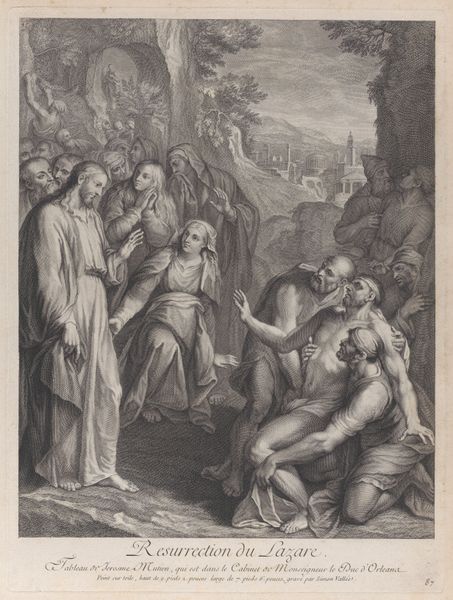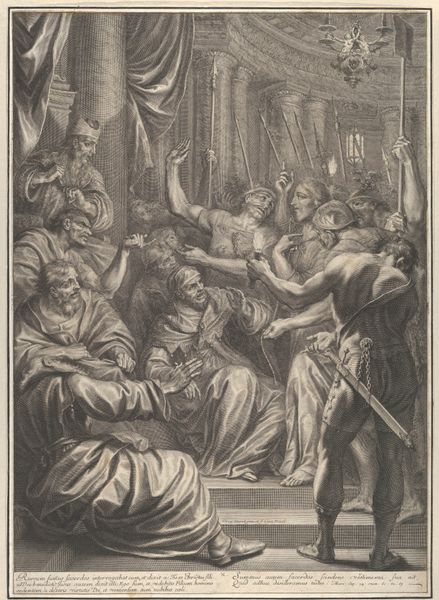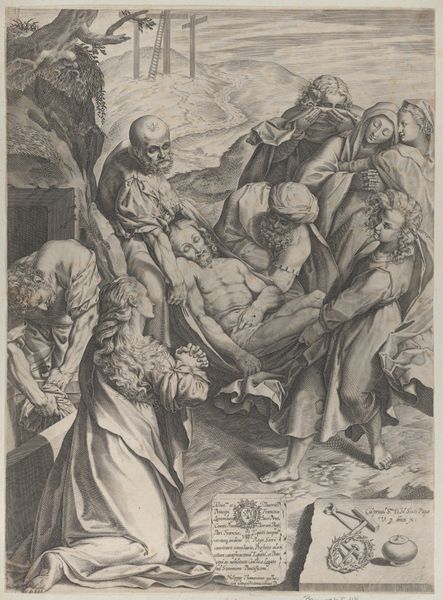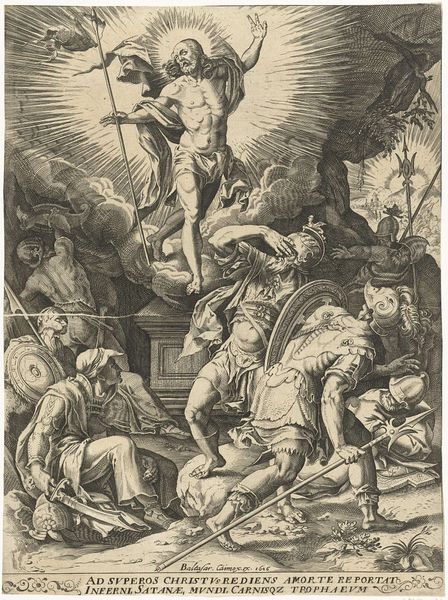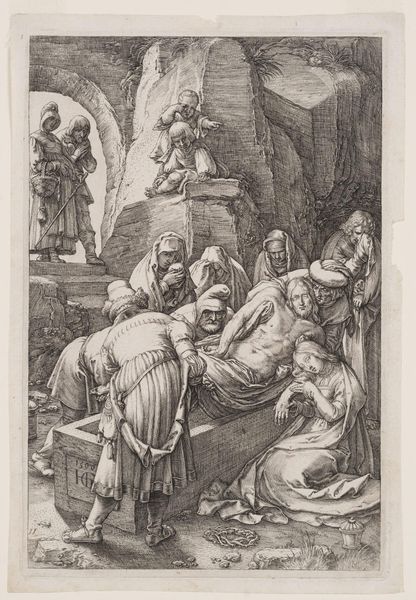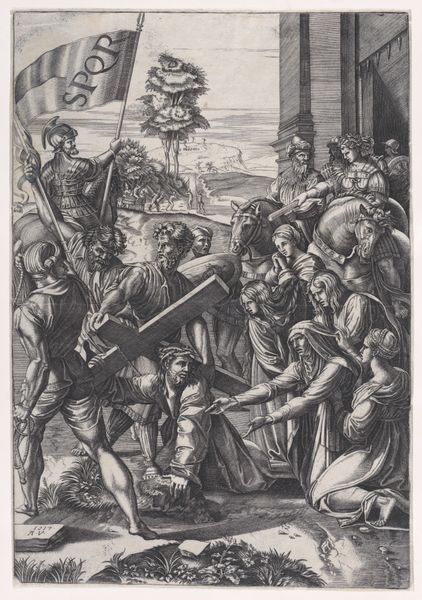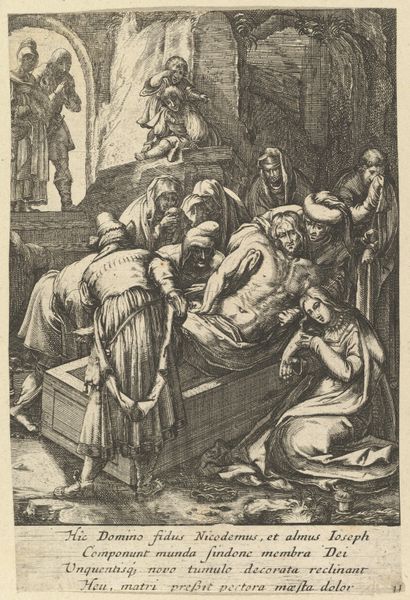
The meeting of Diogenes of Sinope and Alexander the Great 1784
0:00
0:00
Dimensions: Plate: 18 1/2 × 13 11/16 in. (47 × 34.7 cm) Sheet: 20 3/8 × 15 7/8 in. (51.7 × 40.3 cm)
Copyright: Public Domain
Curator: This etching by Quirin Mark, made in 1784, depicts "The meeting of Diogenes of Sinope and Alexander the Great." You can find it here in the Metropolitan Museum of Art. What’s your initial reaction? Editor: I’m immediately struck by the contrast. The almost comical, theatrical presentation of Alexander, armor gleaming, compared to the stark, almost brutal simplicity of Diogenes in his barrel. It’s quite effective, if a bit heavy-handed. Curator: Absolutely. This imagery plays on potent historical symbols. Alexander, the embodiment of ambition and empire, is meticulously rendered – suggesting power, glory, conquest. Whereas Diogenes, with his simple cloak and dwelling, represents philosophical detachment, freedom from worldly possessions. Even his tub becomes symbolic! Editor: I agree. And think about the time this was created. 1784. What a period of upheaval! With revolution brewing and Enlightenment ideas in full swing, this image acts as a kind of political commentary, does it not? This work highlights not only the difference between power and simplicity, but the power of simplicity against power itself. Curator: Intriguing observation. I see Diogenes’ barrel, which may initially seem meager, also acting as a shield. It’s reminiscent of a sanctuary, visually separating him from the demands and temptations embodied by Alexander. It’s an inversion of status; Alexander seeks something from Diogenes. The "less" in fact, dictates the terms of engagement. Editor: Right! Alexander, supposedly all-powerful, is forced to acknowledge this man who owns nothing. It really poses questions about what truly constitutes power and freedom. What do these concepts look like when stripped down of their socio-economic facades? Mark masterfully positions this encounter as a challenge to conventional notions of authority, particularly relevant during a time of shifting societal paradigms. Curator: It highlights how lasting some symbols can be as well, especially regarding power, status, and independence. It’s fascinating to reflect on this interaction through a historical lens, viewing each man’s philosophical symbols. Editor: It certainly does offer a stark reflection on persistent questions. A really rich print, capable of inspiring some fascinating contemporary dialogues.
Comments
No comments
Be the first to comment and join the conversation on the ultimate creative platform.
